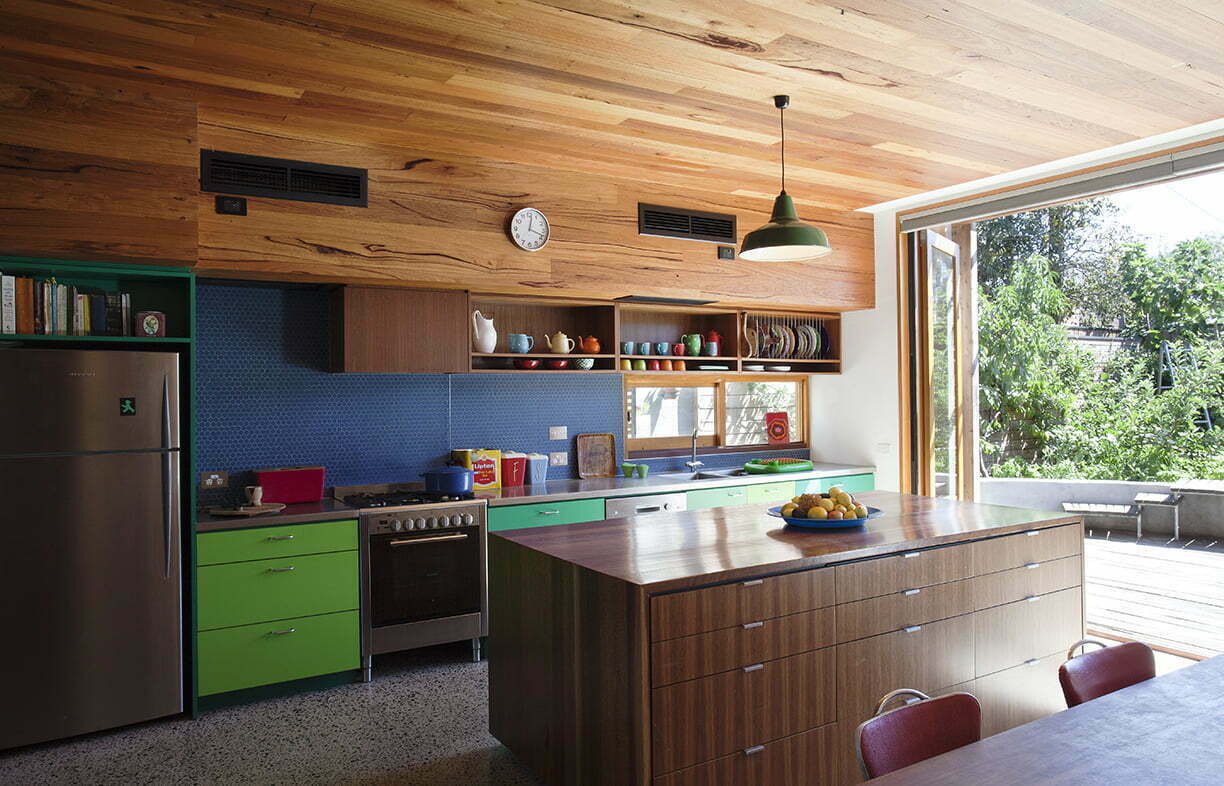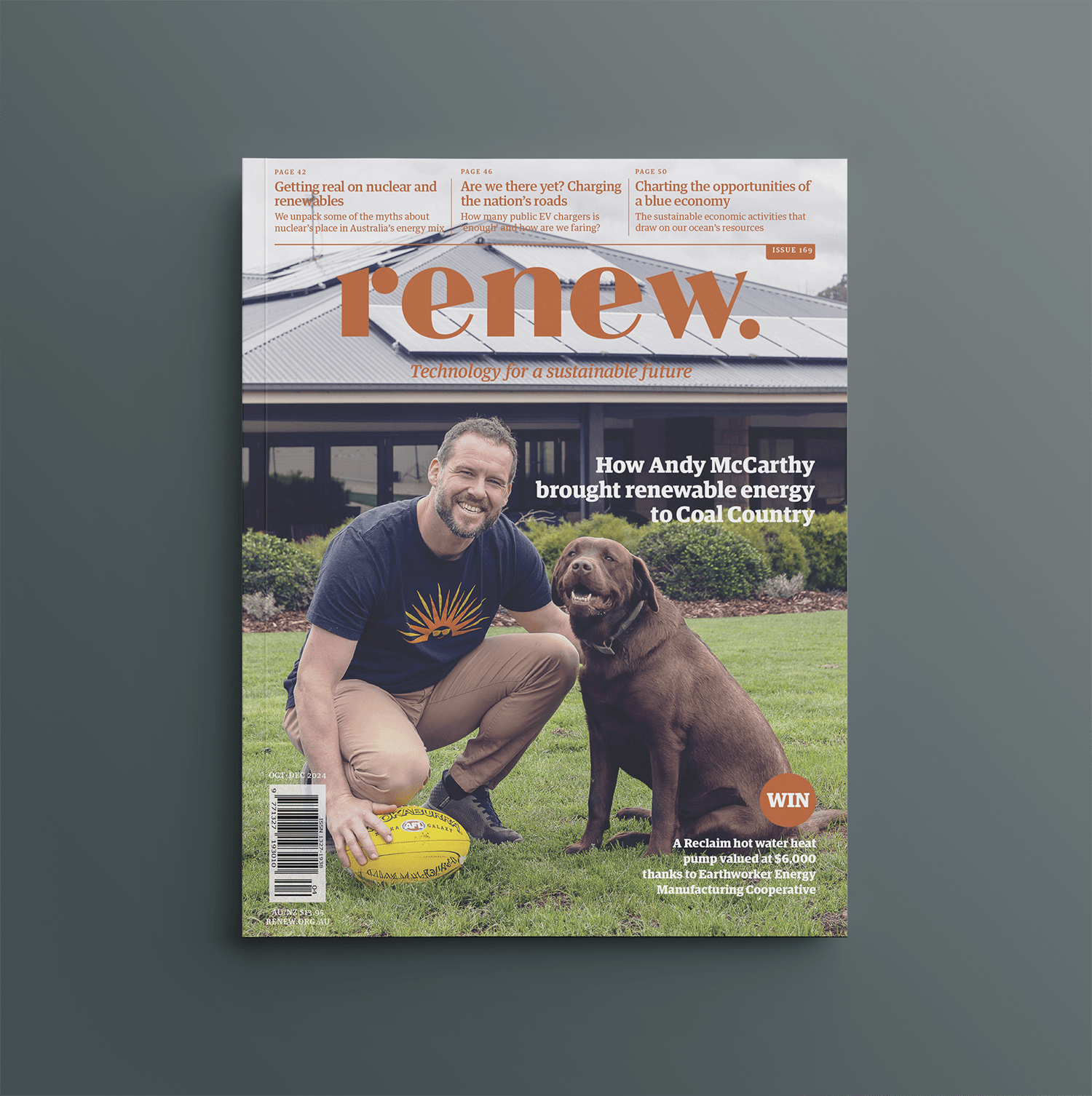Getting your design right
Building or renovating a home can be one of the most challenging – and rewarding – experiences in a person’s life. The results will be with you for years, and perhaps a lifetime, so getting it right from the beginning is crucial.
Here’s our list of things to consider when designing, renovating or making small improvements to your sustainable home.
There is plenty of inspiration in every issue of Sanctuary magazine. Browse our articles on new home builds, renovations and sustainable design principles, along with much more.

A passively designed home makes the most of natural heating and cooling methods to keep its occupants comfortable year-round. Orientation, spatial zoning, thermal mass, ventilation, insulation, shading and glazing are the seven core components of passive design.
Orienting your home correctly is particularly important in temperate and cool climate zones. When a building is able to let the sun in during cold seasons and shut it out when it’s hot, the other six principles of passive design can be balanced to create homes that require minimal active heating or cooling. Good orientation from a passive design perspective generally means locating living areas on the north side of the house, with glazing having clear access to sunlight even in mid-winter.
Different climates need different houses. Australia has more than 80 climate zones but these are often simplified to eight, ranging from tropical to alpine. Make sure you employ a designer who is familiar with your zone and who designs climate-appropriate buildings – for instance, lightweight and ventilated in hot, dry climates; well-insulated and with good solar access in cool climates.
In tropical and hot, dry climates, orientate the house to exclude the sun year-round and to maximise cross-ventilation. In all other climates, your aim should be to minimise summer sun and maximise winter sun, which basically means a northern orientation. Couple your passive solar design with thermal mass (materials such as concrete that absorb heat energy, or a ‘proxy’ such as a phase change material) to retain the warmth of winter sunlight and/or the cool of summer shade.
Make sure your home is designed for the long haul, and that its materials are durable and able to be easily reused or recycled. Crucially, when designing your house, think ahead. Will your family grow, will it shrink or will it stay stable? How will your own health impact your needs in 10 or 20 years time? With these things in mind, you can design a house that not only meets your current needs, but can adapt to your changing needs without you later incurring the cost of an extension or renovation.
This approach doesn’t only apply when you’re designing a new home; it is relevant when you choose appliances for your kitchen, furnishings and more.
Active heating and/or cooling may be necessary in many Australian homes but don’t rush to buy a heater or air conditioner when you may not need one. First, consider how you can improve your home to make it more comfortable. Australian homes are traditionally ‘leaky’ and draughts can be responsible for up to 25 per cent of your heating costs – a similar amount if you air condition. Seal any leaks, use curtains and blinds, make the most of the sun’s heat and shading to moderate your home’s climate, and insulate. If you need air-conditioning, make sure you also have ceiling fans, which significantly increase its efficacy.
One of the most effective ways to save money on energy bills and make your home more comfortable is to insulate. Insulation acts as a barrier, preventing heat passing in and out of a house. By reducing this heat flow you can more easily maintain a comfortable temperature inside, regardless of the temperature outside. In winter, once your home has been heated to a comfortable level, it will stay that way with less energy input than an uninsulated home. In summer, an insulated home will take longer to heat up, requiring less energy for active cooling. Insulation is not just limited to the roof – you can insulate your walls and floor for maximum energy efficiency.
Lighting makes up about 11 per cent of the energy consumed in a typical home, about the same as refrigeration. Households can reduce energy use for lighting by 50 per cent or more by making smart lighting choices and using more efficient technology. Spending a little time and effort to get the lighting right in your house can save you money on energy bills and make rooms more comfortable and enjoyable.
It is important when considering the energy consumption of lighting to look at wattage, not voltage. Wattage measures electrical power, while voltage measures the electrical pressure or force a device runs at. Some bulbs, especially halogen downlights, are sold as ‘low voltage’, with many people thinking this equates to low energy consumption. This is not the case. The important factor is the power rating – 50 watts, for instance, is exactly that regardless of the voltage at which it is supplied and used.
More resources
There is of course more to it than this! In this section we provide information about glazing, healthy homes and sustainable materials.

